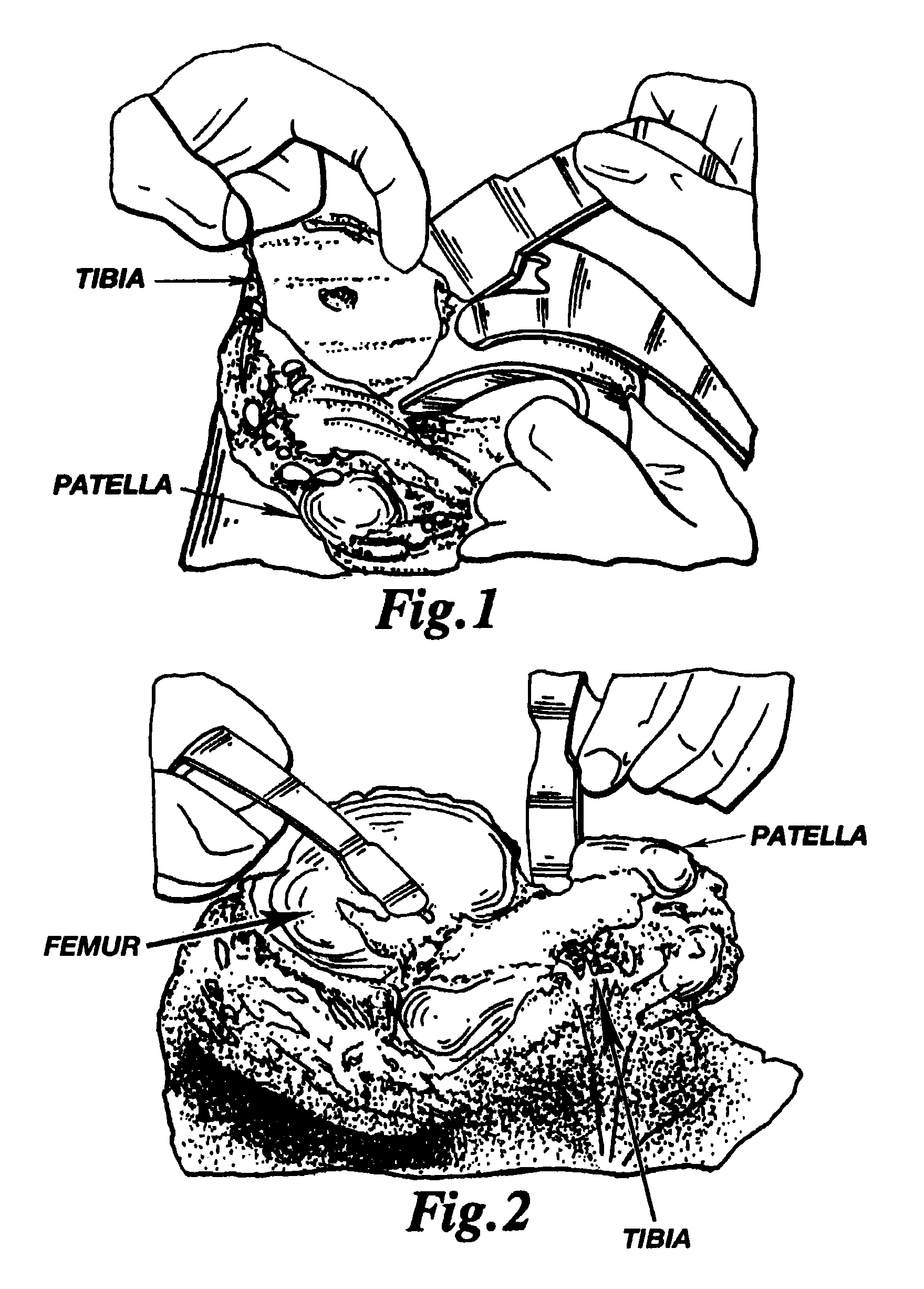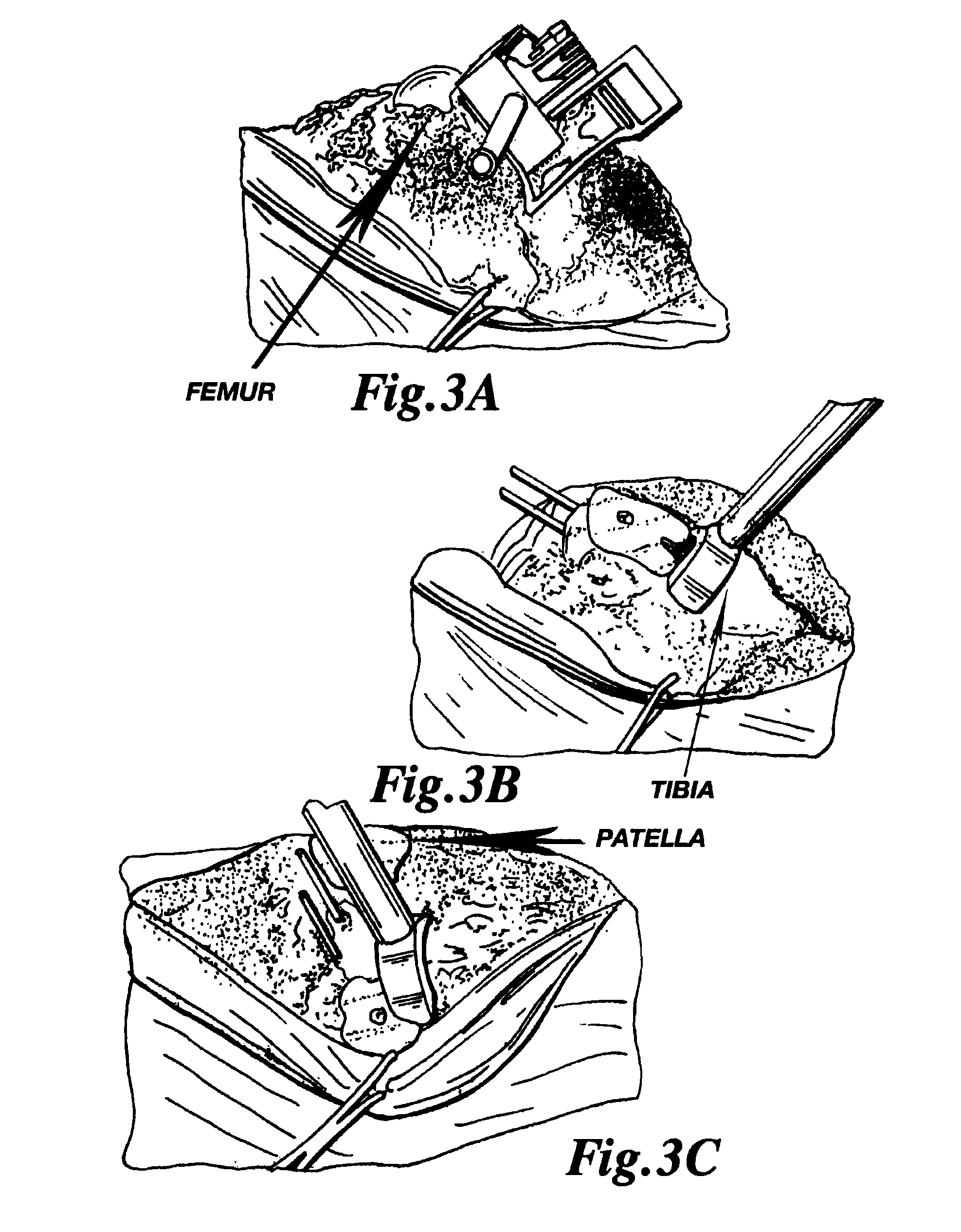Methods and apparatus for improved drilling and milling tools for resection
a drilling and milling tool technology, applied in the field of bone resection, can solve the problems of inability or high resistance of the disclosed tool embodiment, and achieve the effect of facilitating intraoperative and postoperative efficacy and ease of use, and minimizing the tendency of the pilot drill bi
- Summary
- Abstract
- Description
- Claims
- Application Information
AI Technical Summary
Benefits of technology
Problems solved by technology
Method used
Image
Examples
embodiment 200
[0039]FIGS. 16 through 21 describe another embodiment 200 of the present invention. As shown in FIG. 16, this embodiment includes a Base 240 and a Rotational / Translational Pivot Arm 242 coacting to allow for infinite manipulation of the bushing 210 pivot pin 214 location within a desired plane during the process of removing material from the proximal tibia or other bone. Movement of the Rotational / Translational Pivot Arm 242 in both rotational and translational degrees of freedom within a desired plane allows for any combination of rotational and translational movement of the axis of the bushing pivot pin 214 within its desired plane. In other words, this embodiment of the present invention allows for infinite and continuous adjustability of cutting tool 220 location and orientation with respect to the bone or bones being cut while providing for accurate and precise cut surface creation.
[0040]FIGS. 22 through 28 represent another embodiment 200 of the present invention whose princip...
embodiment 300
[0041]FIGS. 29 and 30 show an embodiment 300 of the present invention directed toward endplate preparation in spinal reconstruction where the endplates are prepared to receive a prosthetic implant. Guide 300 includes a milling handle 302 to which the cutting tool 310 attaches. It is interesting to note that the profile of the cutting path 312 of the guide 300 represented in FIG. 30, in this embodiment, is geometrically identical to the cutting path of the resected surface created by the passage of the cutting tool 310 shown. This could be very helpful in clinical application where such a device where inserted into a wound such that, while the surgeon could not visually observe the cutting tool 310 while it removes boney material, he could, by way of the guide geometry, observe where the cutting is with respect to the bone being cut by looking at the position (represented by “POS 1” and “POS 2”) of ‘Pivot 2’, represented in FIG. 30, with respect to its location in contact with the gu...
embodiment 400
[0048]FIGS. 35-40 shows an embodiment 400 of the present invention wherein the guide plates 402 and guide surfaces 404 are located entirely outside the wound, but the side cutting drill 420 and handle 422 construct are not passed through mediolateral soft tissue portals described hereinabove. The side cutting drill controlling portion 424 of the handle is essentially ‘snaked’ into the less invasive wound / exposure / approach / incision and the guide engagement features 426 are engaged to the cutting guide at a location entirely outside the wound. As long as the axis of the engagement feature 426 is maintained as coaxial with the side cutting drill 420, the desired cut geometries will be attained despite manipulation of the handle 422 with respect to the guide 402. This method can be utilized to complete some or all of the desired cuts. Also, this embodiment of the current invention can be used to perform the posterior cut, posterior chamfer cut, and distal cut optionally using kinematic ...
PUM
 Login to View More
Login to View More Abstract
Description
Claims
Application Information
 Login to View More
Login to View More - R&D
- Intellectual Property
- Life Sciences
- Materials
- Tech Scout
- Unparalleled Data Quality
- Higher Quality Content
- 60% Fewer Hallucinations
Browse by: Latest US Patents, China's latest patents, Technical Efficacy Thesaurus, Application Domain, Technology Topic, Popular Technical Reports.
© 2025 PatSnap. All rights reserved.Legal|Privacy policy|Modern Slavery Act Transparency Statement|Sitemap|About US| Contact US: help@patsnap.com



